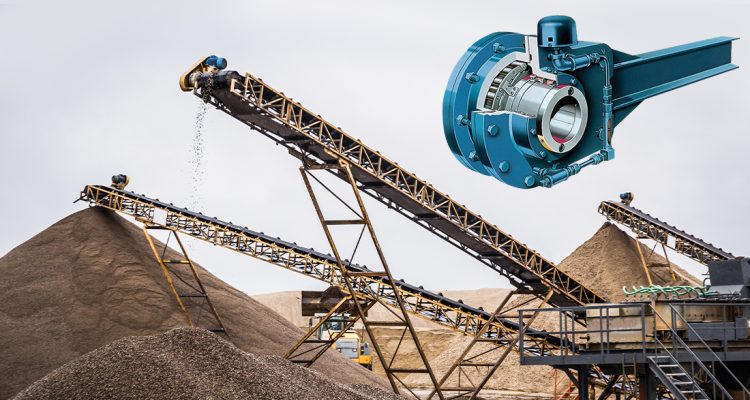The quarrying industry can pose significant health and safety risks to employees if quarry managers don’t take steps to ensure a safe working environment.
According to Work Safe Victoria, there are more than 900 quarries in the state of Victoria that range in size from locally owned and operated quarries to large scale operations that are owned by conglomerate investors and global mineral powerhouses.1
Victorian quarries produce a range of materials that supply other Australian industries. Whether it is cement, stone or aggregates like rock, gravel and sand used in the building and construction industry or mineral soil for agriculture, Australians depend on quarried materials for every aspect of their lives.
And yet, regardless of the size of a quarrying operation or the crucial role it plays in Australian life, the risks and hazards quarries pose always remain the same because of the nature of the working environment.
It may seem obvious that falling rocks could be a big risk on quarrying sites, but there are many ways that this can occur on various pieces of quarrying equipment, according to Steve Hittmann, Category Manager for Industrial Drive Systems and Mobile Final Drives at Motion Australia.
“Quarrying equipment is designed to move heavy rock material upwards, downwards, and side to side. This could be in the form of an inclined conveyor belt or a bucket elevator,” says Steve.
“Now imagine for a second that an incline belt conveyor that is about 30 or 40 metres long has heaps of crushed rock on it going uphill to another location on site. In total, that conveyor could have 10 tonnes of crushed rock on the incline.”
“Now if the drive on that conveyor cuts out for whatever reason– an equipment failure or a power outage– the drive and the conveyor belt will start running backwards down the incline and the 10 tonnes of crushed rock will go with it, landing at the bottom of the conveyor, with any luck nowhere near any pedestrians. But the damage that it can do is catastrophic.”
These kinds of dangerous situations are not uncommon on quarrying applications. As a result, Victoria’s Occupational Health and Safety Act of 2004 issued strict regulations for quarrying sites that ensure these dangers are minimised as much as possible.
Installing backstops and anti-roll back technology on inclined conveyors is just one of the required precautions that every quarry must take on equipment to stay within the bounds of OHS laws, but it is a very important one.
“Australia-wide, any piece of equipment that is inclined by more than four degrees, is required by law to have anti-roll back technology in place,” expounds Steve.
“Fortunately, Motion Australia suppliers that we work with like Regal Rexnord have been proactive in designing solutions to address the dangers of quarrying applications with their Falk True Hold NRT Low-Speed Backstops solution.”
For more than 125 years, Regal Rexnord has been globally recognised for their forward-thinking innovation in the fields of power transmission. Regal Rexnord acquired the Falk brand in 2005, ushering in a new range of power transmission solutions which now includes safety products for industrial applications.
On a basic level, the Falk True Hold NRT Low-Speed Backstops are a failsafe solution for elevated and inclined equipment, as they allow it to rotate in only one direction. An example is in the case of an inclined quarrying conveyor – the belt line can rotate up the incline, but it won’t rotate backwards. If the machine tries to roll back, the Falk True Hold NRT Backstops will stop it.
But in addition to providing substantial safety benefits, the Falk True Hold NRT Low-Speed Backstops also have a number of other capabilities, according to Steve.
Why Motion Australia recommends Falk True Hold NRT Backstops
1. Suitable for dusty environments
Dual, double lip contact seals on each side of unit protect against lubricant leakage and contamination.
2. Longer service life
Grease purgeable exclusion seals create a barrier for contamination and enhances seal life, reducing maintenance costs and extending the life of the seals.
3. Low maintenance generous lubricant capacity
The units maintain optimum oil splash for internals and optimum cooling of the Backstop. The cooler operating temperature enhances oil life and seal life.
4. Visual lubricant check
A standard oil site glass allows operators to verify lubricant levels visually.
5. Performs optimally under variable temperature, humidity, and moisture
The Falk 3-micron Airmax Breather prevents moisture from entering during the inhalation cycle and allows moisture to exit and evaporate as the NRT reaches normal operating temperature. This prevents water contamination and eliminates oxidation of rotating elements.
6. Positive holdback operation
Ramp and roller backstopping mechanism performs a wedging action of the cylindrical rollers compressed between the inner cam and outer race assuring immediate prevention of roll back rotation.
7. 100,000 full load cycle rating
Backstop mechanical design capabilities meet or exceed the life of most or all system components. NRTs can run longer than the expected system design life.
Other features and benefits
• Proven speed and load functionality
• Ideal for high vibrational applications
• Dual sets of fasteners and gaskets on seal cages
• Versatile installation potential
• Extended torque capability with load balancing on hydraulic load sharing system
• Maximized tonnage capabilities
• 3-year Heavy Duty Warranty
References:
- Worksafe Victoria. Quarries health and safety guide. https://www.worksafe.vic.gov.au/quarries-health-and-safety-guide

